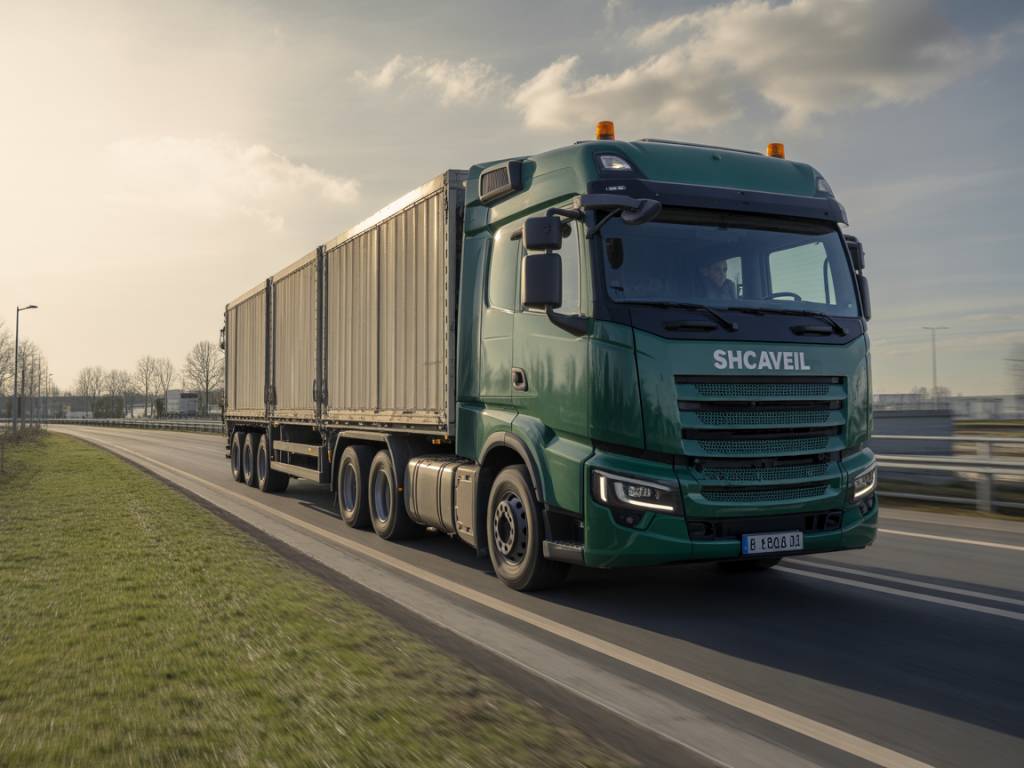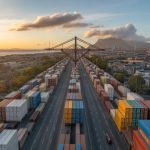The Urgency of Decarbonizing Heavy-Duty Transport
Heavy-duty transport—including trucks, buses, and large freight vehicles—plays a crucial role in the global supply chain and infrastructure. However, it is also one of the most carbon-intensive sectors within the transportation industry. According to the International Energy Agency (IEA), heavy-duty vehicles account for nearly 40% of all road transport carbon emissions, despite representing just 5% of the vehicle fleet worldwide. As climate change drives urgent action, decarbonizing heavy-duty transport has become a central focus in global sustainability strategies.
This blog post explores key strategies and emerging technologies aimed at reducing emissions in heavy-duty transportation. From electric trucks to alternative fuels and regulatory frameworks, multiple solutions are shaping a greener and more sustainable future for freight and logistics.
Electrification of Freight Vehicles
One of the most prominent strategies for decarbonizing heavy-duty transport is vehicle electrification. While electric passenger cars have already gained considerable traction, the transition to battery electric trucks (BETs) is still in its early stages due to technological and infrastructural barriers.
Nonetheless, several manufacturers have begun producing electric trucks with ranges suitable for urban and regional delivery:
- Tesla Semi: Positioned for long-haul freight with reported ranges of up to 500 miles.
- Volvo VNR Electric: Designed for regional routes, offering about 150 miles per charge.
- Freightliner eCascadia: Built for short-haul operations with fast-charging capabilities.
Battery energy density remains an obstacle, especially for long-haul applications. However, advances in solid-state batteries and fast-charging technologies are gradually making electric trucks a viable option for more operators. The expansion of charging infrastructure along major freight corridors is also a key enabler.
Hydrogen Fuel Cell Technology
Hydrogen fuel cells offer another promising pathway for decarbonizing heavy-duty transport. Fuel cell electric vehicles (FCEVs) convert hydrogen gas into electricity, emitting only water vapor. These vehicles are particularly suitable for long-haul applications because they offer extended range capabilities and faster refueling times compared to battery electric trucks.
Leading manufacturers and pilot projects in this domain include:
- Hyundai XCIENT Fuel Cell: Already operational in Switzerland and the U.S.
- Toyota and Kenworth: Collaboration on fuel cell Class 8 trucks in California.
- Nikola Motors: Developing hydrogen-powered long-haul trucks with fueling networks across North America.
A major challenge with hydrogen technology is the production of green hydrogen, which is generated using renewable energy. The current hydrogen supply chain is still heavily reliant on fossil fuels, limiting its sustainability potential. Scaling up electrolysis-based hydrogen production and building refueling stations remain critical priorities for the coming decade.
Renewable Fuels and Biofuels
In the near term, renewable diesel and biofuels present a more accessible way to reduce emissions from existing internal combustion engine (ICE) fleets. These fuels are compatible with conventional engines and can be blended or used as drop-in replacements.
Common low-carbon liquid fuels include:
- Biodiesel (FAME): Produced from vegetable oils or animal fats, used in blends like B20 or B100.
- Renewable diesel (HVO): Made through hydrogenation processes, offering near-identical performance to petroleum diesel.
- Biomethane: Upgraded biogas used as a renewable alternative to natural gas in CNG/LNG-powered trucks.
Biofuels provide a transitional stepping stone for fleet owners looking to reduce their carbon footprint without major vehicle upgrades. However, production must be managed sustainably to avoid indirect land-use changes and supply chain emissions.
Improving Aerodynamics and Efficiency
Beyond fuel and powertrain innovations, improving the overall efficiency of heavy-duty vehicles contributes significantly to emission reductions. Aerodynamic enhancements, reduced rolling resistance, and intelligent routing all play a role in decreasing fuel consumption.
Fleet operators are increasingly investing in technologies such as:
- Trailer skirts and rear tail devices to reduce air drag
- Low rolling resistance tires
- Idle-reduction systems and auxiliary power units (APUs)
- Telematics and GPS-based route optimization tools
According to the North American Council for Freight Efficiency (NACFE), deploying multiple efficiency technologies together can result in fuel savings of up to 15-20% per truck, making it a cost-effective short-term strategy for emission reduction.
Regulatory and Policy Drivers
Governments and international bodies are increasingly mandating emission reductions through policy frameworks and regulations. The European Union’s CO2 standards for heavy trucks aim to reduce emissions by 30% by 2030 compared to 2019 levels. In the U.S., the California Air Resources Board (CARB) has introduced the Advanced Clean Trucks rule, requiring manufacturers to transition to zero-emission trucks from 2024 onwards.
Incentives are also available to support fleet electrification and sustainability upgrades, including:
- Grants and subsidies for purchasing zero-emission vehicles
- Tax credits for infrastructure installation
- Low-emission zones (LEZs) that restrict diesel trucks in urban areas
Private sector pressure is accelerating this shift as well. Large shippers and retailers are committing to carbon neutrality targets and prefer logistics providers with green credentials, creating a commercial incentive for decarbonization.
Digitalization and Fleet Optimization
Digital technologies are increasingly central to sustainability efforts. Fleet management software now includes environmental key performance indicators (KPIs), real-time emissions tracking, and predictive maintenance systems to optimize fuel use and minimize downtime.
AI and machine learning are being leveraged to analyze vast datasets from telematics systems, enabling smarter decision-making. Key benefits include:
- Reduced empty mileage and better load utilization
- Proactive maintenance alerts to enhance vehicle longevity
- Adaptive cruise control for efficient highway driving
Integrating digital tools with supply chain systems allows for end-to-end visibility and sustainability reporting, a key requirement for shippers working to meet ESG (environmental, social, and governance) criteria.
Infrastructure and Multi-Stakeholder Collaboration
The move toward zero-emission heavy-duty transport cannot happen in isolation. Investments in charging, refueling, and maintenance infrastructure are essential to support new vehicle technologies. Public-private partnerships are critical to overcoming these systemic barriers.
Key areas of focus for stakeholders include:
- Expanding high-power charging hubs along freight corridors
- Developing hydrogen production and distribution networks
- Establishing common standards for chargers and connectors
- Training programs for technicians and drivers on new technologies
Cities, fleets, utilities, OEMs, and governments must align goals and share data to build ecosystems capable of sustaining zero-emission logistics services over the long haul.
The Path Forward for Sustainable Heavy-Duty Transport
The decarbonization of heavy-duty transport is not only necessary but inevitable. As technology matures and policies tighten, fleet operators will need to adapt or risk obsolescence. Early adopters are already seeing lower total cost of ownership, improved brand reputation, and greater access to contracts with environmentally conscious clients.
With a portfolio of solutions—from electric and hydrogen vehicles to renewable fuels and efficiency upgrades—the sector now has multiple levers to pull. The key lies in matching the right technology to each operational use case, guided by data, policy, and forward-looking investment.
As the global logistics industry continues to evolve, sustainability will no longer be a competitive advantage—it will be a baseline expectation. By embracing innovation and collaboration, the heavy-duty transport sector can transition toward a cleaner, more resilient future.



